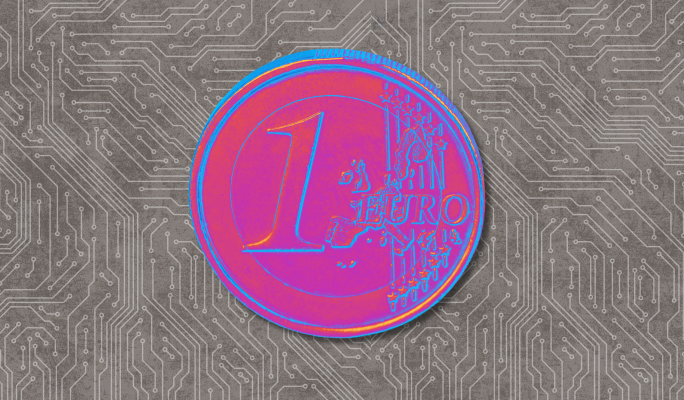As digital and online transactions become increasingly embedded in everyday life, central banks around the world are adapting to keep pace with evolving financial habits and technological advances.
In this context, the European Central Bank (ECB) is actively working on the development of a digital euro, a new form of central bank money designed for the digital age. The initiative is aimed at ensuring the euro remains fit for purpose in a fast-changing payments landscape, while safeguarding monetary sovereignty and financial stability.
The digital euro is described by the ECB website as an electronic means of payment available free of charge to everyone.
“Like cash today, you could use it anywhere in the euro area, and it would be secure and private. In our increasingly digitalised society, a digital euro would be the next step forward for our single currency,” it said.
The digital euro would be stored in an electronic wallet set up with a bank or with a public intermediary. This would allow people to make all their usual electronic payments: at their store, online, to a friend, or with their phone or card, online and offline.
But will the digital euro affect people’s financial habits? Will it change the way they bank?
To better understand what a digital euro could mean for Malta and its financial ecosystem, MaltaToday spoke with Central Bank of Malta Deputy Governor Alexander Demarco.
He explained the digital euro will not be replacing banknotes or coins, but rather complements them.
“Even well before the COVID pandemic, shopping over the internet had been growing significantly, especially in Malta. […] However, it is not possible to use cash through this medium of exchange as the use of banknotes requires physical proximity, like purchasing in a physical store or in an exchange between two persons. While a citizen would still be able to use the digital euro in physical stores or in person-to-person transactions, it has the added convenience of being able to use the same instrument, i.e. central bank money, to undertake purchases over the internet, and between persons, even if these are not physically near each other,” he explained.
He said the upside to the digital euro is that it makes use of a common infrastructure across payment services providers, both nationally and across the Eurosystem. This according to Demarco, makes it easier and cheaper for citizens to make payments to businesses or other citizens independent of the choice of payment service provider.
The acting Central Bank governor said it can be used anywhere, with plans to make it available in countries from outside the euro area through agreements with respective countries’ central bank.
Is it so different from having a credit card?
From BOV to Revolut to Cash App, credit and bank cards are widely accessible to users for their banking needs. Demarco said the digital euro will not make these technologies obsolete, but rather compliment them.
“It is no different from using one’s bank card to make purchases as one could use the digital euro through a specifically dedicated app by the Eurosystem for the digital euro or one could use the service provider’s own specific application for this purpose. This can be used when making purchases in a physical shop, person-to-person, or over the internet. But it will also have an offline functionality so that it can be used both in physical stores and in person-to-person transactions even in the absence of mobile reception or WiFi communication,” he said.
If a person does not have a smartphone, one could still use the digital euro to make payments using a card. In the case of offline payments, the card would function like a pre-paid card, but in the case of online payments, whether over the internet or in a physical store, its use would be like that of existing cards, depending on the funds available in the digital euro account.
However, a digital euro user could instruct his payment service provider to automatically withdraw funds from their bank account to provide sufficient funds in the digital euro account to enable payment transactions in excess of the funds available in the digital euro account at the time of the purchase.
Alongside the digital euro, one could still use other payment applications, like SEPA, that are linked to a commercial bank account, where in such cases payments are made in commercial bank money and not central bank money, which is the case for the digital euro and banknotes and coins.
A threat to cryptocurrency?
Over the past decade or so, cryptocurrency like Bitcoin and Ethereum have exploded across the globe. At the time of writing one Bitcoin is valued at around €98,388.
Demarco was asked whether the digital euro will be competing against cryptocurrencies, or whether the technology’s application varies.
“Citizens are free to choose whatever means of payment they wish to choose. The digital euro will be another choice for citizens, that together with banknotes and coins, will provide citizens the opportunity to use public money, issued by the European Central Bank, when making person-to-person transactions, in a physical store, and electronically, both online and offline,” he said.
He said crypto assets, like Bitcoin and Ethereum, could be used for payment purposes, but unlike the digital euro they will not enjoy legal tender status and the widespread acceptance that it implies.
“Crypto assets will also continue to be characterised by volatility in their value, whereas one digital euro will remain equivalent to one physical euro. Other means of payment will continue to co-exist with the digital euro, and that is fine as long as consumers have the choice to pay with public money for whichever payment channel it is convenient for them to choose,” he said.







